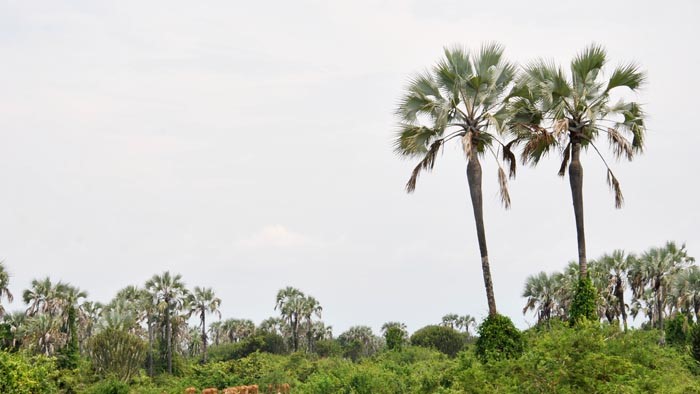Located in north-western Burundi, straddling the Democratic Republic of Congo, the Rukoko Nature Reserve covers almost 8,000 hectares. It offers a mosaic of landscapes in which every plot of land tells an ancient story. This article invites you to discover the ecological wealth, secrets and conservation challenges of this natural jewel of Burundi.
Geography and ecosystem of Rukoko
The Rukoko Nature Reserve is located on the Rusizi plain, an extension of the East African Rift. Its territory includes a portion of the delta of the Rusizi River, which flows into Lake Tanganyika, as well as swamp forests, savannahs and a vast palm grove. This diversity of habitats explains the reserve's incredible biodiversity.
This protected area includes
- Swamp forests : Dominated by species such as the raffia palm, these aquatic environments provide an ideal refuge for numerous amphibians, reptiles and birds.
- Palmeraie : A vast expanse of Hyphaene benguellensis var. ventricosa palms, this unique landscape forms a transition zone between the delta and the reserve's mountainous slopes.
- Savanes : Drier areas, with species adapted to open and wooded environments.
The Reserve's emblematic fauna
Rukoko is renowned for its diversity of wildlife:
- Hippos: The waters of the Rusizi delta are home to a large population of hippos.
- Primates : A variety of monkey species can be encountered, including chimpanzees and colobus monkeys.
- Antelopes : Various species of antelope are present in the savannah zone.
- Birds : The reserve attracts numerous water birds, including pelicans, cormorants and crowned cranes.
- Crocodiles : Crocodile populations, once threatened, are gradually recovering.
Conservation issues and threats
Although protected, the Rukoko Nature Reserve faces a number of pressures that threaten its delicate balance:
- Poaching: Illegal hunting affects emblematic species such as hippos and antelopes.
- Deforestation : The spread of agriculture and the exploitation of trees for charcoal production are threatening habitats, particularly swamp forests.
- Demographic pressure : Population growth around the reserve has led to human-wildlife conflicts, particularly with hippos, which can damage crops.
- Bush fires: Set to clear land or promote grass regrowth, uncontrolled bushfires can affect vast areas of the reserve [...https://www.sosmediasburundi.org/2020/09/16/gihanga-la-reserve-naturelle-de-rukoko-a-pris-feu/]
- Regional insecurity: Conflict and instability in the neighbouring Democratic Republic of Congo hamper monitoring and conservation efforts.
Conservation actions undertaken
Despite the challenges, initiatives are underway to protect the Rukoko Nature Reserve:
- Increased surveillance : Anti-poaching patrols are organized, reinforced by the involvement of local communities.
- Raising public awareness : Actions to inform local residents of the importance of the nature reserve for biodiversity conservation and their livelihoods help to limit conflicts.
- Sustainable development : Reforestation, beekeeping and ecotourism projects aim to reconcile nature conservation with improving living conditions for local populations.
Conclusion
The Rukoko Nature Reserve, with its varied landscapes and rich fauna, is a natural treasure of inestimable importance for Burundi. Its protection is essential to preserve the region's unique biodiversity and contribute to the country's ecological balance.
Photo © Facebook Page de IWACU


There are no reviews yet. Be the first one to write one.